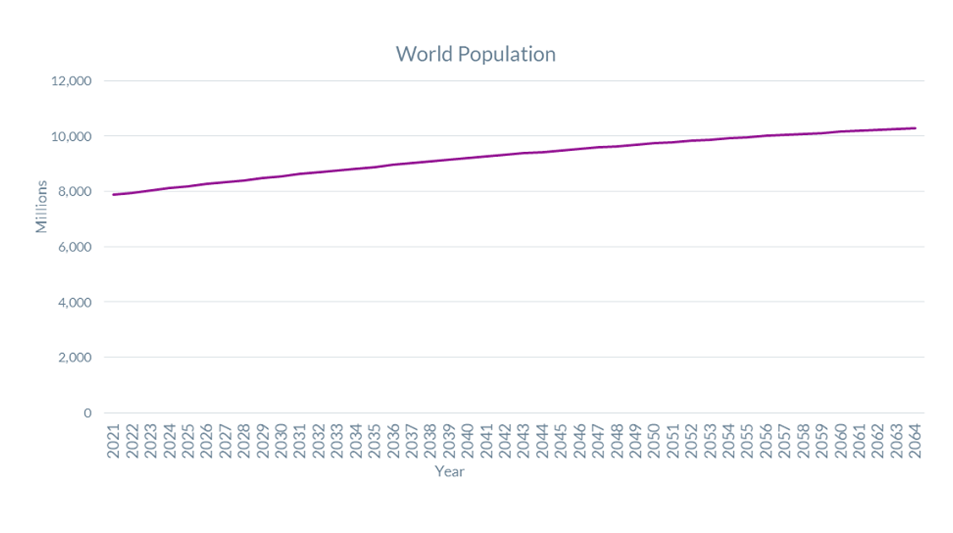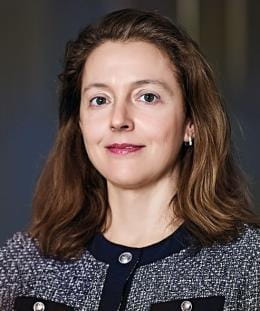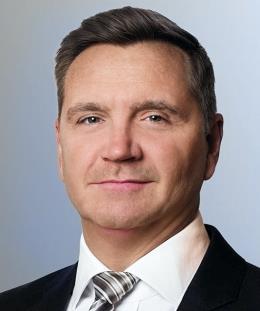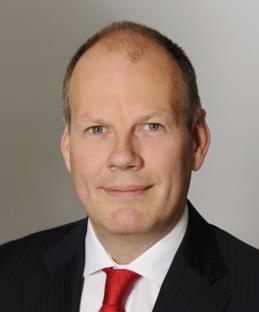Low Carbon Pulse - Anniversary Edition
19 October 2021

Welcome to the Anniversary Edition of Low Carbon Pulse. The first edition of Low Carbon Pulse was published on October 6, 2020, the 28th edition on October 6, 2021. Every two weeks, Low Carbon Pulse seeks to share the current significant news on progress towards net-zero greenhouse gas (GHGs) emissions (NZE) globally.
To mark the anniversary of Edition 1 of Low Carbon Pulse, the Global Ashurst Towards Zero Emissions team has consolidated each edition of Low Carbon Pulse into a Low Carbon Pulse Compendium (LCPC). Also each paper, report and study referenced in Editions 1 to 28 of Low Carbon Pulse has been listed in the back of the Compendium to provide a virtual library as a source of reference. The Compendium is searchable. Having established the LCPC and the virtual library, they will be updated as new editions of Low Carbon Pulse are published.
This Anniversary Edition of Low Carbon Pulse reflects on the past 12 months, and the next 12 months – "12 months in review and 12 months in preview". In reflecting, the United Nations Climate Change Conference commencing on October 31, 2021 (COP-26) is very much in mind. It is difficult to overstate the importance of COP-26. For the author, there appears to be a weight of expectation like never before.
You may download the PDF version of Low Carbon Pulse Compendium and the Anniversary Edition below.
Edition 1 of Low Carbon Pulse was written on a Saturday morning at the Hilton Hotel, Hohola, Port Moresby, National Capital District, PNG. This Anniversary Edition was written at Bootless Bay, on Loloata Island, Central Province, PNG, on Saturday October 9, 2021. As well as editions written in PNG, other editions have been written in Cairns, Sydney and Singapore. Before COVID-19, the author spent time "on the road" working with clients on projects and transactions across Asia Pacific, and into MENA. It is likely that future editions of Low Carbon Pulse will be written on Saturdays in equally evocative and wonderful locations.
Edition 1 of Low Carbon Pulse covered a seven day period, and had a relatively meagre word count. Subsequent editions have covered 14 day periods, with the scope of the subject matter covered increasing over time, reflecting increased progress. The most recent editions of Low Carbon Pulse have been longer than earlier editions as news and trends, and the roles of Governments, Central Banks, International Agencies, Policy Banks and the private sector have been covered ahead of COP-26.
In these unusual times, the author has been fortunate to spend time with clients, and colleagues in Port Moresby, Singapore and Sydney, avoiding lockdown. In many ways, the period from March 2020 has been as satisfying as any in the author's career. Clients and colleagues have maintained a sense of humour, including occasionally laughing, but more often than not grimacing or sighing, or both, at the "sense of humour" of the author. For clients and colleagues in PNG who have hosted me for 12 out the last 18 months, thank you, including for the recently conferred soubriquet, "the low pulse carbon".
Thank you.
In Edition 22 of Low Carbon Pulse (covering July 12, 2021 to July 25, 2021), following the release of the Fit for 55 package for the European Union (EU), the commencement of the Emissions Trading Scheme in the Peoples Republic of China (PRC), and the close of applications for the ScotWind Leasing Scheme, the author reflected that there were reasons to cheerful, and in doing so the author reflected on the passage of time, and the importance of not wasting it.
Of course, both The Tempest and Brave New World are works of fiction, The Tempest a work of whimsy, Brave New World a work of warning. And yet, they illustrate how mindset can define – seeing a world of endless possibilities or being confined (and ultimately defined) by a degree of difficulty and hard work.
There are always reasons to be cheerful and to be positive. In the context of NZE, the "size of the prize" should define, the nature and the difficulty of achieving NZE should not confine the need to achieve NZE.
In writing this Anniversary Edition of Low Carbon Pulse, the author placed a limit of 10 pages and 10,000 words. This was not easily done. In doing so, some tough decisions were made around what not to include.
On August 9, 2021, the Intergovernmental Panel on Climate Change (IPCC), published the Sixth Assessment Report – Climate Change, The Physical Science Basis (2021 Report). The 2021 Report did not change the agenda, but the near certainty of its findings increased the sense of urgency surrounding the agenda, arriving as it did in the middle of extreme weather events in the Northern Hemisphere summer.
It is fair to say that there has been an ever increasing sense of urgency over the last 12 months bookended by the commitment of the PRC to achieve NZE by 2060 (covered in Edition 1 of Low Carbon Pulse), and the United Arab Emirates commitment to achieve NZE by 2050 made on October 7, 2021, since May 2021.
Article 4 of the Paris Agreement provides that: "In order to achieve the long-term temperature goal set out in Article 2, Parties aim to reach global peaking of greenhouse gas emissions as soon as possible … and to undertake rapid reductions thereafter in accordance with best available science, so as to achieve a balance between anthropogenic emissions by sources and removals to sinks in greenhouse gas in the second half of the century".
To the author, these words are as important to the preservation of a habitable world as the words of The Gettysburg address are to the author's favourite evocation of the concept of democracy.
Article 4 recognises that the continued emission of GHGs to the climate system increases the concentration of GHG emissions already at large in the climate system, and will result in the continued increase in average global temperatures: existing GHGs at large in the climate system have "baked-in" temperature increases as a function of the life-cycle of those GHG emissions. A number of reports covered in Low Carbon Pulse have proved this.
Each tonne of GHG emitted to the climate system adds to climate change. A reduction in GHG emissions slows the rate of change, i.e., slows the rate of increase in average global temperatures. Progressing to, and achieving, NZE will result in slow and then stabilised climate change, and the removal of GHG emissions will result in the decline of GHG emissions in the climate system.
Article 4 of the Paris Agreement contemplates the:
Each country that has acceded to the Paris Agreement is at a different stage in RPR. Some have peaked already, and are on a downward trajectory through reductions in GHG emissions arising, progressing to achieving NZE. Other countries have not yet peaked, and some will not peak until later this decade (PRC) and others not until sometime after that (India and Indonesia). This is a function of many things, primarily economic development.
The current NDCs of each country that has acceded to the Paris Agreement can be found on the NDC Registry. Please note that some countries have committed to increase their NDCs (and in so doing to increase the reduction of GHG emissions) but have to do so formally under the Paris Agreement.
It is critical that each element of RPR is not viewed as mutually exclusive, each element should be taking place at the same time, and countries that can do more should be doing more. In short, the higher the NDCs and the sooner a country satisfies those commitments, the better.
This explains the increased focus on achieving reductions by 2025, 2030 and 2035. It is to be hoped that at COP-26 that each developed country will increase its NDCs materially to each of these five year milestones. Certainly it is hoped that each G 20 country comes away from COP-26 having committed to a higher NDC.
The causes of climate change are known. At the core, the cause of climate change is the increased concentration of GHG emissions in the climate system: GHG emissions cause net-positive radiative forcing, resulting in the accumulation of heat energy in the climate system – GHG molecules absorb heat energy.
The root cause of increased GHG emissions is the growth in population, the increased prosperity of that population, as a general statement, the resulting increased average life expectancy, and means to achievement of that prosperity, principally the extraction of resources that give rise to GHG emissions.
Currently, the expectation is that the global population will peak at 9.7 billion people in 2064, declining to 8.8 billion people by 2100, from 7.75 billion people at the moment. At the same time, as the population and prosperity is to increase, together, we need to transition from 50 Gt CO2-e emissions annually to NZE annually by mid-century, or, if we want to avoid the worst effectives of climate change, sooner.
If you will, this is currently a 7.75 billion 3D Earth Sized Jigsaw Puzzle, the number of pieces grows by the minute.


The good thing is that, among the growing population, there are chemists and physicists smart enough, and dedicated enough, to have modelled what needs to be done to solve the 3D Earth Sized Jigsaw Puzzle. On October, 6 2021, two of those smart and dedicated folk, Mr Klaus Hasselmann and Mr Syukuro Manabe, were awarded The Nobel Prize in Physics 2021.
Not only are wonderfully dedicated and smart scientists on the case, the world's largest corporations (including international oil companies and national oil companies) are increasingly engaged on doing what is necessary to progress to achieve NZE by 2050, many before 2050.
Some of the smartest and wealthiest titans of business and industry are blazing a trail to NZE, and in doing so are providing leadership and clear recognition that achieving progress to NZE is a pathway paved with opportunity. Some of those titans are known for throwing the ball as far as they can down the road, and driving their businesses to chase the ball. This is the time for throwing the ball as far as possible.
As Bill Gates says, getting to NZE by 2050 "will be the hardest thing humanity’s ever done".
The pie chart below shows the countries that emit the greatest proportion of GHG emissions in percentage terms. The heavy lifting falls to, and needs to be done by, a relatively limited number of countries, critically by the developed countries, but not by them entirely.
The author has chosen not to include a graphic showing GHG emissions by reference to the population of each country, i.e., per capita GHG emissions. This non-inclusion reflects the perspective of the author: achieving NZE is global world emergency, that needs to be owned by those able best to respond to it.
See this Each Country's Share of CO2 Emissions graph produced by the Union of Concerned Scientists.
Economic development is a function of many things. For example, in the case of the PRC, it produces goods for export to countries that are not now manufacturing those goods, in fact the level of trade between the PRC and other countries is now greater than the level of trade between the United States of America (US) and other countries. The PRC is a manufacturing power house, having become so in the last 30 years. The world has benefitted from this.
The PRC manufactures goods of a kind used within the PRC and that are exported, including goods that are key to the decarbonisation of electrical energy generation, including solar panels and batteries to store electrical energy. Because of the scale of the PRC domestic market, and in many instances the lower cost of labour, the unit cost of manufacture is lower than that achievable by manufacturers in other countries. This has contributed to the lower costs of electrical energy globally, particularly the cost of photovoltaic solar, and will continue to do so over the medium to long term.
For some countries, committing to NZE may be some years away, certainly those countries that are continuing to develop. For example, at times during the past 12 months, it has been reported that India and Indonesia might commit to achieving NZE. It is a credit to the Governments of both India and Indonesia that they have not done so. There is no point to a country committing to achieving NZE if that country is not sufficiently developed to have a clear pathway to NZE or if that country is continuing to apply its scarce resources to respond to COVID-19.
That is why the commitment of the PRC to achieving NZE by 2060 was momentous, likewise its plans to phase out coal-fired electrical energy generation (and retrofitting of coal-fired generation capacity to take hydrogen and hydrogen-based fuels), and its target to achieving peak GHG emissions before 2030.
The PRC has emerged as a key means to achieving progress towards NZE: activities in the PRC may be giving rise to the greater percentage of GHG emissions, but the PRC is committed to achieving NZE at the same time. That is key to the achievement of NZE globally through the manufacture of photovoltaic solar, and, increasingly, wind turbines. In many ways, the commitment of the PRC to achieving NZE can be taken as a given.
If countries are not developed sufficiently to commit to NZE, they should not do so. Instead, countries that are progressing to NZE should increase their rate of progress, and commit to assisting other countries to reducing their GHG emissions.
Increasingly, throughout the last 12 months, countries have realised that achieving NZE at a country level is not going to be sufficient unless NZE is achieved globally. The EU and the United Kingdom (UK) have been reducing GHG emissions for many years, and the UK has not only peaked, it has passed the half-way point on the road to achieving NZE. The task for countries that have made most progress is to increase the rate of progress to NZE as soon as possible. Achieving NZE, is not like a game of patience / solitaire.
The graphs on page 17 of the 2021 Report illustrate the current and required direction of travel in respect of each of the scenarios in the 2021 Report, and explained in Edition 24 of Low Carbon Pulse.
One of the themes to emerge over the past 12 months, in particular in the context of the International Energy Agency (IEA) Net Zero by 2050 – A Roadmap for Global Energy Sector (IEA Roadmap) and the International Renewable Energy Agency (IRENA) World Energy Transitions Outlook (WETO) is the need for countries to increase their commitments to reduce GHG emissions, and then to deliver on them.
This may appear an obvious point to make, but what both the IEA Roadmap and the WETO demonstrate is that announced commitments and commitments reflected more formally are not going to be enough to achieve NZE.
Under the IEA Roadmap, at best, the announced commitments by 2050 are 30 Gtpa of GHG emissions (Announced Pledge Case or APC), and the commitments reflected more formally are 22 Gtpa of GHG emissions (Specific Policy Settings or SPC). The best under either APC or SPC is not enough. Not even close.
Under the WETO, IRENA models the Planned Energy Scenario (PES), effectively modelling the implementation of the then current NDCs, alongside IRENA's 1.5OC Scenario.
Edition 22 of Low Carbon Pulse covered BloombergNEF's report Net Energy Outlook (NEO): unless the rate of GHG reductions increases, the world's carbon budget will be exceeded by 2044: this will mean that neither the Stretch Goal nor the Stabilisation Goal will be achieved. This outcome is consistent with the 2021 Report, and that by as early as 2028 we may miss the Stretch Goal.
On the basis of the 2021 Report (and aligned with the IEA Roadmap, WETO and NEO) the United Nations Secretary General, Mr Antonio Guterres, has expressed extreme concern that, without increased NDCs and accelerated GHG emission reductions, we will take a Catastrophic Pathway (see below).
Current commitments and pledges will not be enough.
The IEA Roadmap, WETO, NEO and 2021 Report provide the modelled basis for Ms Greta Thunberg's "blah, blah, blah" speech given at the Youth4Climate conference, held in Milan, Italy, coinciding with the Pre-COP-26 meeting during the week beginning September 27, 2021. Ms Thunberg led the Fridays for Future march.
One might not be drawn to the rhetoric of ridicule used by, or directed at, Ms Thunberg. Ms Thunberg is nevertheless right in saying that change is "not only necessary, but urgently necessary". Those who criticise Ms Thunberg are wrong in not accepting the necessity for action, and its scale, and that the necessity is upon us.
While the language and tone of Ms Thunberg is different from that of Mr Guterres' speech to the United Nations General Assembly during the week beginning September 20, 2021, the underlying message is the same. Mr Guterres expressed "extreme concern" that the world is on a catastrophic pathway to a 2.7OC increase in average global temperatures compared to pre-industrial times (Catastrophic Pathway).
Politics of rhetoric: As Ms Thunberg has no doubt realised, it is difficult to shame politicians, and that it is impossible to dislodge apologists for those politicians from their well-upholstered saddles from which they survey their version of the world from their high horses – to many a "world of the woke" and clouded by conspiracy theories expressed in search of listeners and viewers who will listen and watch. Mr Guterres and Ms Thunberg, share the same concerns and no doubt have the same frustrations.
Business leaders to lead, policy settings to follow: Leaders in business and business organisations are to the fore. For example, business leaders, Mr Warren Buffet, Mr Larry Fink, CEO of BlackRock, Dr Andrew Forrest, AO, founder of Fortescue Metals Group, Mr Bill Gates, co-founder of Microsoft and Breakthrough Energy, and Ms Shemara Wikramanayake CEO of Macquarie Group, and many others.
Leaders of business bodies, for example, Mr John Denton, AO, Secretary General of the International Chamber of Commerce, have a leading role to play if not the leading role to play.
Policy settings set, Government and private sector to implement: Business leaders and business bodies have a global constituency, and those leaders informed by their own good sense and experience (critically, what is and is not achievable), are able better to lead, and are doing so in a way that is pragmatic (climate change is upon us and we need to do something about it).
As noted in Edition 28 of Low Carbon Pulse, the predecessors of the current international oil company were there at the start of industrialisation, and they will be there when we get to NZE. It is important to note that none of these business leaders are saying that NZE cannot be achieved. It is recognised that achieving NZE is a mammoth task, in the memorable words of Mr Bill Gates, "the hardest thing humanity’s ever done". Each of these leaders is backing the science of climate change and the development of technology to achieve NZE.
Two of the author's favourite poets were born in the 16th and 17th centuries: John Donne and Alexander Pope. As a school boy, their poems had the advantage of rhyming, with catchy couplets, memorised more readily, and, in the case of John Donne (at least for the most part), being short. With age, the poems of Donne and Pope reward with repeated reading and reveal layers of meaning, like Emily Dickinson, TS Eliot and WB Yates.
Nearly 150 years before pre-industrial times, Pope mused: "Nature and nature's laws lay hid in the night. God said, Let Newton be! and all was light!" The genesis of understanding is science, believe the science.
In simpler times, a time before the periodic table (1817) and two centuries before any understanding of the impact of compounds of elements within it on the climate system, clear thinking folk reflected that: "Honor and shame from no condition rise. Act well your part, there all the honor lies" (Pope), and "No man is an island" (Donne).
These sentiments resonate. Compound these sentiments with science, and they guide. Many political leaders and business leaders, so guided, are walking, the walk. All need to join to walk in step, ever faster, towards the achievement of NZE. From the inconvenient truth about which Mr Al Gore spoke and wrote in 2000, to the greatest achievement of humanity inside 50 years, all need to play their part.
Tools of the trade: Many reports over the past 12 months have identified the way and means (pathways and roadmaps) to NZE. There is no common way or means, it is for each country to find its own way and means. There was criticism of both the IEA Roadmap and the WETO on the basis that the pathways and roadmaps that they outlined were not achievable and as such flawed, and, in some instances, easily ignored.
It is important to note that neither the IEA Roadmap nor the WETO purport to be the only way and means of progressing to achieve NZE, rather each of them provides a tool-box of ways and means.
In one of the quotes of the year, Ms Jenny Chase Head of Solar, at BloombergNEF, provided for the following assessment: "I don’t think that anyone really knows how they're going to get to net-zero, but the obvious place to start is just to build a load of renewables".
When asked by a leading Japanese trading house what its strategy should be in becoming involved in the hydrogen and hydrogen-based fuel projects, the author responded, continue to develop renewable electrical energy projects, and Scope 1 and 2 GHG emission reductions; the hydrogen market is not going to go away.
In an equally pithy and robust quote, Mr Mischa Repmann, Senior Environmental Management Specialist, Corporate Real Estate and Services, at Swiss Re is quoted as saying: "The science is clear, the challenge is massive: Do our best, remove the rest! In other words reduce, reduce, reduce, and in parallel start balancing the emissions through carbon removal".
These two quotes demonstrate that while the science is clear, the pathway is not, and there is no one roadmap: progress towards achieving NZE is going to be piecemeal, it is going to be iterative. Develop renewable electrical energy, reduce, reduce, reduce, and remove, remove, remove, as quickly as possible.
Over the last twelve months a number of atlas of renewable resources have been released: pumped storage, solar and wind. From the headlines accompanying the release of these atlases, the world has sufficient renewable resources many times over.
For once, the headlines are accurate, and yet incomplete. There are sufficient renewable resources to achieve NZE, but they need to be developed ahead of the retirement of existing electrical energy generation and at a rate that allows the production of hydrogen and hydrogen based fuels.
This pie-chart is as good as any in providing a sense of the sectors from which GHG emissions arise.
One of the joys of authoring Low Carbon Pulse is following the connectedness of change, and the pace of change, in progress towards NZE.
Over the last 12 months there has been considerable progress, with development needs and policy setting needs being identified, and the emergence of initiatives to address them. This section (Progress before our eyes) reflects on some of the developments and policy settings in which we have seen material and significant progress: off-shore wind field development, battery electric storage systems (BESSs), the benefits of scaling up of photovoltaic solar, the development of HVDC interconnectors, green iron and steel, ports, and carbon clusters and hubs, and the recognition of the benefits of the reduction in CH4 emissions.
Just as there has been progress before our eyes, there has been less progress.
On August 4, 2021, the World Economic Forum (WEF) released a short video conveying current key dynamics, projected increases in GHG emissions, and that the current rate of progress to NZE will not be sufficient: the majority of global GHG emissions arise from countries (with over 65% of global population) that have yet to reach peak GHG emissions. The GHG emissions from those countries are projected to increase by 5 Gtpa (5 billion metric tonnes per annum) by 2040.
As noted in Edition 22 of Low Carbon Pulse (under Empowering Cities for a Net Zero Future), the decarbonisation of cities has to be front and centre of policy settings: every month globally an urban area the size of New York City will be developed for the next 40 years. In this context, if the countries that have reached peak emission are to work with countries that have not, to reduce, indeed to avoid, GHG emissions, there needs to be close coordination.
Even if the developed countries achieve NZE by 2040, this will not achieve NZE globally to achieve either Paris Agreement Goal. This is consistent with the analysis of BloombergNEF in NEO: unless the rate of GHG reductions increases, the world carbon budget (which does not include 5 Gtpa increase noted above), will be exceeded by 2044: this will mean that neither the Stretch Goal nor the Stabilisation Goal under the Paris Agreement will be achieved. This outcome is consistent with the 2021 Report, and the Catastrophic Pathway.
As noted in previous editions of Low Carbon Pulse, the rate of investment required to enable countries that have yet to reach peak GHG emissions to achieve NZE will not be achieved unless developed countries work with those countries to accelerate decarbonisation, while at the same time increasing reductions and removing GHGs.
During the Leaders' Summit held on April 22 and 23, 2021, US Energy Secretary, Jennifer Granholm, said that the achievement of NZE was this generation's moon shot.
On May 25, 1961, the last Mr John F. Kennedy, the newly minted president, told the US Congress that the US "should commit itself to achieving the goal before this decade is out, of landing a man on the Moon and returning him safely to the Earth". There was around 40% support, and around 60% against the idea.
On September 12, 1962, the late Mr John F. Kennedy delivered his marvellous "We choose to go to the moon" speech: " … technology has no conscience of its own. Whether it will become a force for good or ill depends on man … We choose to go to the Moon. We choose to go to the Moon in this decade, and do other things, not because they are easy, but because they are hard … ".
Combining the concepts and rhetoric of two very different people and eras, achieving NZE by 2050 is more than this generation's moon-shot. If we get it wrong it could be our last shot, and it is not a choice, it is an imperative – it is a challenge that we have to accept, and that we cannot postpone, and that we have to win. This is why Ms Thunberg, and her many millions of followers and supporters have a view, a strong view, and they are right to have that view.
Since Edition 1 of Low Carbon Pulse, Low Carbon Pulse has referred to the Stretch Goal and the Stabilisation Goal, the former limiting the increase in average global temperatures to 1.5OC above pre-industrial levels, the latter limiting the increase in average global temperatures to between 1.5OC and 2OC above pre-industrial levels.
The phrase Stretch Goal reflected the author's view that it was going to be a stretch to limit the increase in average global temperature to 1.5OC. The Paris Agreement contemplates a range, and that range is 1.5OC to 2OC, and all the science indicates the importance of staying within this range, but not to give up on the Stretch Goal. Further, all policy settings should continue to be framed and calibrated to achieve the Stretch Goal.
Many reports over the past 12 months have identified the ways and means (pathways and roadmaps) to NZE. There is no common way or means, it is for each country to find its own way and means, but as noted above the best place to start is to build a load of renewables.
While a number of folk have been doing their own mathematics, and the IEA Report, WETO and NEO each estimated the scale of renewable electrical energy that need to be built, whatever the metric for a load of renewables, it is many loads, loads for loads! It is for Governments to ensure that renewable electrical energy is developed, the load is there.
Editions 25 and 26 of Low Carbon Pulse reported two interesting facts: 25 mega-cities are responsible for 52% of GHG emissions arising in an urban setting globally, and 5% of the world's global electrical energy capacity gives rise to 73% of the CO2 emissions arising from the generation of electrical energy globally.
While these are power station by power station, city by city and country by country issues, the facts allow a focus to be applied to policy settings, so as to prioritise decarbonisation electrical energy generation and cities.
The decarbonisation of the AFOLU sector is the most difficult, tied as it is in many countries and regions to cultural, political and social dynamics, and, as populations become more prosperous, tied to choices that people are able to make around the foods that the consume.
In the near to medium term, there is a role for Government to develop and to promote NGHGIEs that create value for landholders and countries more broadly, including the value of not using land at all, and using land in ways that results in removal of CO2 from the climate system, in a way that does not denude that value through the sale of carbon credits over the long term for use as off-sets.
In addition, there is a role for Government in the collection of waste land use, and more broadly across waste and waste water arising in both urban-settings and non-urban-settings and the use of that waste to produce bio-energy.
The information provided is not intended to be a comprehensive review of all developments in the law and practice, or to cover all aspects of those referred to.
Readers should take legal advice before applying it to specific issues or transactions.






Sign-up to select your areas of interest
Sign-up